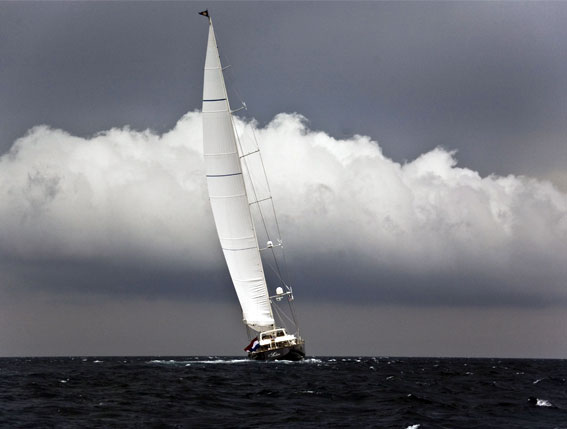We first analyzed the global buckling factors on transverse and longitudinal planes. EnginSoft created three different parametric models starting from an initial model developed by Perini Navi in ANSYS:
- the first model was of a simplified section of the mast and included the cross-sectional area and relative moments of inertia as parameters. Changes to the mast geometry produced a range of these parameters that was then passed as parameters to the second model created
- the scope of the second model was to analyze the global buckling of the mast. This was a full scale model of the mast where the structure was over-constrained and took into account nonlinearities resulting from high deformation of the mast during the initial preloading phase and of nonlinearities due to cable-shrouds reacting only under tensile stress
- the third model was created to study the local buckling phenomena. To account for the effects of pre-stress due to the cable tightening (preload), an initial pre-stress static analysis has been set, followed by a linear buckling analysis
It was now time to take an integrated approach to these three models. We used modeFRONTIER to integrate the procedures of these three models into an automated optimization loop. Within this new framework, the variables were automatically processed to improve the project configurations. The optimization problem consisted of: 35 geometric variables; 8 constraints; 3 objectives (two buckling factors and weight).
The optimization strategy used: an initial well-spread population created using a Sobol sampling; MOGA-II, a multi-objective genetic algorithm, to reach the best global results.
Creating a mathematical model of the mast brought clear advantages to this project. Savings included:
- financial savings due to reduced amount of materials needed, and elimination of the need to create prototypes that would normally be required when using the trial and error approach in the design of a new product. This is a substantial saving given the large dimension of the part in question;
- time savings allowing the company to bring the yacht to market faster;
- increased sail efficiency of the yacht thanks to the lighter weight mast.
EnginSoft’s contribution to the development of this new simulation methodology at Perini Navi was made possible thanks to our extensive experience in three specific fields: parametric numerical modeling; multi-disciplinary optimization; expertise in the integration and automation of software simulation in the design process.

The FE model, including complex nonlinearities due to high deformations (for the initial preloading), and cable-shrouds (reacting only under tensile stress)
The mast buckling analysis: the preload due to cable tightening was modeled using an initial stress, followed by a linear buckling analysis

